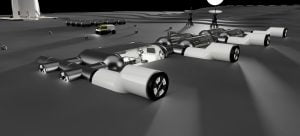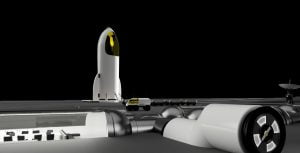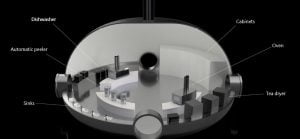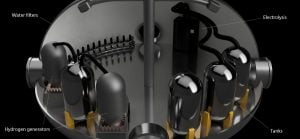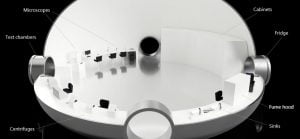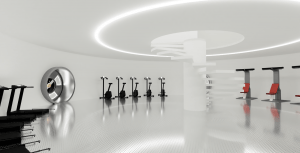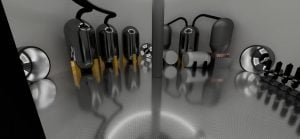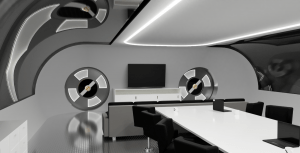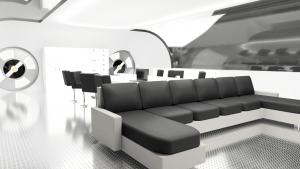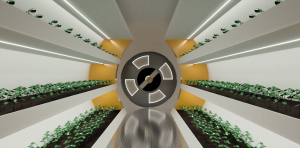Moon Camp Pioneers Gallery 2020-2021
In Moon Camp Pioneers each team’s mission is to 3D design a complete Moon Camp using Fusion 360. They also have to explain how they will use local resources, protect astronauts from the dangerous of space and describe the living and working facilities.
Team: Orpheus Program
II Liceum Ogólnokształcące im. księżnej Anny z Sapiehów Jabłonowskiej w Białymstoku Białystok Poland 16, 15
External viewer for 3d project
|
Project description
Named after the son of Apollo, Base Orpheus is designed as the next milestone in human exploration of outer space. The establishment of a permanent outpost on the Moon would not only be a remarkable achievement, but also an opportunity for future expansion. The base is designed specially to coexist with the Gateway Station, which presence in the Moon’s orbit would prove extremely useful during the base’s operation. In case of an emergency, both outposts would collaborate to ensure the safety of astronauts and would cooperate closely in terms of research and logistics. Base Orpheus doesn’t only have to exist as an outpost, though. It can also be used as e.g. a fuelling station for future missions. The modularity of the design gives the base conditions to expand onto further scientific branches. The communication problem from the lunar north pole to Earth would have been resolved by placing relay satellites on the low lunar orbit. |
|||
|
Where do you want to build your Moon Camp?
The location we chose to build our moon settlement in is near the northern rim of the Peary crater on the Lunar North Pole. We picked this particular location because of its near-constant illumination by the Sun, which will keep the temperature relatively stable and help the colony sustain itself energetically by using photovoltaic modules. Considering that our settlement will be built near the Lunar North Pole, the photovoltaic modules will be set at an angle of 90° for most efficient generation because of the low tilt of the Moon’s spin axis. An additional feature of the lunar environment near the Peary crater is the mountainous ring around the rim, which could be allocated to house the radar and communication systems. Considering the environment near the crater, our photovoltaic modules will be placed on top of a mountain, so they do not get obscured by other rock formations. How do you plan to build your Moon Camp? Describe the techniques and materials you would use.
The process of constructing the camp would be divided into 5, carefully excogitated and developed steps. The first one would be comprised of probing and exploring the possible sites near the northern rim of the Peary crater and ultimately picking the final location. The second stage of development would include transporting modular rovers equipped with drilling and mining equipment, which would bore tunnels and dome-sized holes underground. During the third stage, inflatable capsules would be inserted into the chambers and inflated. Next, the walls of the dome would be sprayed with expanding foam and lined with high-density polyethylene panels. On the floor, the surface of the inflatable dome would be covered with triangular, aluminum panels. The fourth stage would include the transport of farms (which are appropriately sized to fit in our rocket), regolith 3D printers, non-printable materials, and other equipment to the base. Next, the 3D printers would use regolith to manufacture less critical equipment and furniture, like sinks, cupboards, or tables. The fifth and last stage would include the arrival of humans and final positioning of various appliances around the base. The environment on the Moon is very dangerous for the astronauts. Explain how your Moon Camp will protect them.
When designing the settlement, we decided that safety of the astronauts onboard will be our number one priority. We made a choice to use phosphate glass doped with CeO2 and Sb2O3, which shows potential to block as much as 61.9% gamma radiation and 73.9% UV radiation. This would greatly lower the risk of developing radiation-related diseases. We have also taken into consideration the effects of solar storms, which would pose a great danger to our astronauts, by placing the main quarters of our settlement 7 meters under the lunar surface. This is more than enough to fully shield the base from solar storms and small meteorites. We have also decided to make our base fully modular, which means that a module could be fully separated in case of an emergency, for example the underground part could function independently in case of damage to the ground portion of the base. Explain how your Moon Camp will provide the astronauts with:
|
|||
|
Water
|
Food
|
Electricity
|
Air
|
|
In an environment such as the Moon’s, obtaining water would not be an easy task. The critical factor for acquiring water is the location of the base. Multiple studies show the Peary crater to be quite promising in terms of water accessibility. Base Orpheus would include specially designed drills, which would extract ice from underground deposits. Then, the ice would be melted into liquid water, filtered and distributed across the base or stored in tanks on the surface as a backup. Our life support system would also include reverse-osmosis equipment, which would extract water from human urine or excrement |
During advanced stages of the base development, botanists would plant and take care of plants brought from Earth in the form of seeds. Those plants would include potatoes (for carbohydrates, potassium, and fiber), buckwheat (for protein, fiber, and various minerals), cabbage (for vitamins and folic acid), and legumes, such as lentil (mostly for fiber and protein). Our farms will also include honeybees in bee enclosure modules, which would produce buckwheat honey and could pollinate future plants. As a means to strengthen morale, we would also grow tea in carefully controlled conditions and dry it to be used as a beverage. |
Most of the electricity needed to supply the base will come from photovoltaic modules. Our solar farm will be located on top of the tallest mountain in the area to avoid being obscured by other rock formations. The panels will also be placed at an angle of 90° (because of the Moon’s low axial tilt), so we can maximize the gain of electricity. Hydrogen gained as a product of electrolysis of water would also be used as a backup electricity source, in case of a failure in the main system or during a process requiring additional power. |
Even before the first manned mission would have arrived at the station, large quantities of liquid oxygen and nitrogen would be transported to the colony and stored in specially designated tanks outside the base. Once the base is completed and sealed from the outside environment, an artificial atmosphere of 79% nitrogen and 21% oxygen would be introduced to the colony. During the later stages of the development, the crew would activate the electrolysis equipment, which would allow the base to obtain oxygen from water mined in the form of ice or reclaimed, for example, from plants or carbon dioxide. |
|
Explain what would be the main purpose of your Moon Camp (for example: commercial, scientific, and/or tourist purposes).
We decided that our base will serve mostly a function of conducting scientific research and establishing a permanent and semi self-sufficient outpost on the Moon. The base would house interdisciplinary research, such as biology (studying the behaviour of plants and bees in Moon conditions), geology (exploring the composition and properties of lunar regolith and rock), chemistry (conducting experiments targeted to explore the chemical conditions on the Moon) and physics (performing experiments to study low gravity and overall lunar conditions). In the future, once energy technology progresses, Orpheus Base would serve as a facilitation of the extraction of Helium-3 on the Moon. |
|||
|
Describe a day on the Moon for your Moon Camp astronaut crew.
In order to maintain the same comfort of living and working on the Moon as on Earth, the workday of our astronauts will be divided into three, 8-hour long shifts. This would allow astronauts to perform their respective tasks without getting overworked. That would also be controlled by a special system installed within the base, which would analyse the crew’s behaviour and mental state and issue tasks accordingly.
Depending on the day, after waking up, part of the crew would either exercise in the gym or go straight to the bathroom, where they would shower, brush their teeth and get dressed. Later, they would head to the canteen, where they would eat breakfast and socialize with other crew members. After that, the crew on the current shift would go over to the meeting room, where they would be briefed over the day’s assignments and orders from command. Next, the crew would get dispatched to their own respective habitats to perform their daily activities, like scientific research, maintenance, engineering or communications control.
At the end of the work day, the engineering crew would check all of the life support, extraction and maintenance systems and report it to the crew from the next shift. Then, the crew would enjoy a couple of hours of off-time, during which they could communicate with their families and friends back on Earth, watch movies, read books and so on. Once their free time is over, they will go to the bathroom to brush their teeth and place their work clothes into the washing machines and prepare to go to sleep. Finally, while falling asleep, special systems would control the lightning and environment to make the crew’s rest as peaceful and comfortable as on Earth. |
|||


